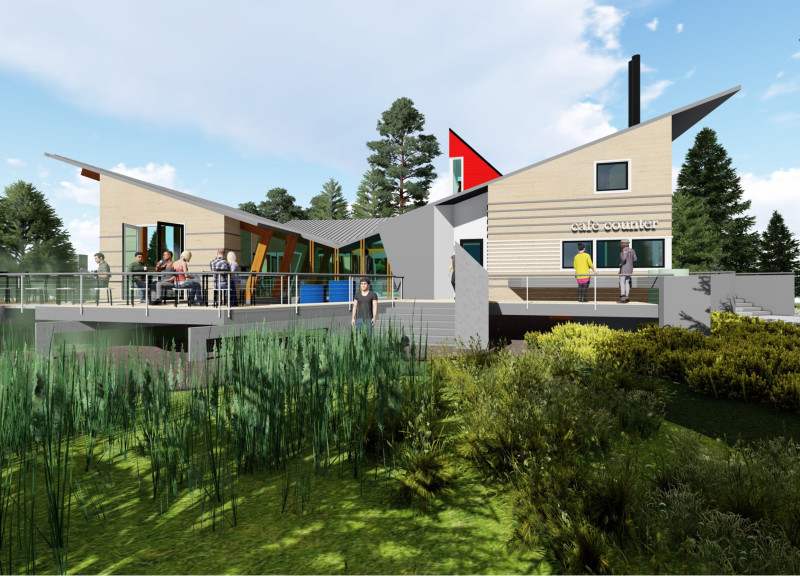5 key facts about this project
The Great Kemeri Bog Visitor Center is located in Kemeri National Park in Latvia. It serves as an important starting point for visitors, providing information and resources to explore the unique natural environment. The design of the center takes inspiration from the shapes and patterns found in the local bog landscape. The layout connects different visitor services while allowing for a meaningful interaction with the nature surrounding it.
Architecture Concept
The building features a series of raised pavilions that create specific areas for reception, staff services, exhibitions, and dining. This arrangement improves the movement between different spaces and makes it easy for visitors to access what they need. The close positioning of the campground, playground, and café encourages outdoor engagement, helping people feel more connected to the park. The elevated design evokes the hiking experience, allowing visitors to appreciate the landscape without harming it.
Material Selection
The choice of materials reflects local traditions and a focus on sustainability. Spruce and pine wood sourced from the region play a significant role in the construction, linking the building to Latvia’s architectural heritage while blending well with the forested environment. Reinforced concrete is used for the foundation, ensuring the structure remains strong and stable in the often variable weather of the area.
Sustainability Features
The visitor center incorporates several environmentally friendly strategies. A rainwater harvesting system is in place, utilizing gutters and cisterns to manage stormwater efficiently. The collected rainwater can be purified for various uses within the center. A geothermal heating system is also included, employing multi-zoned heat pumps to regulate energy needs while maintaining comfortable indoor conditions throughout the seasons.
Design Detail
The façade features a pattern of planes that create a rhythm, letting light filter in while connecting the interior to the outside environment. This thoughtful detail enhances the overall look of the building and underscores its role as a point of entry to the natural beauty of Kemeri National Park.


















































